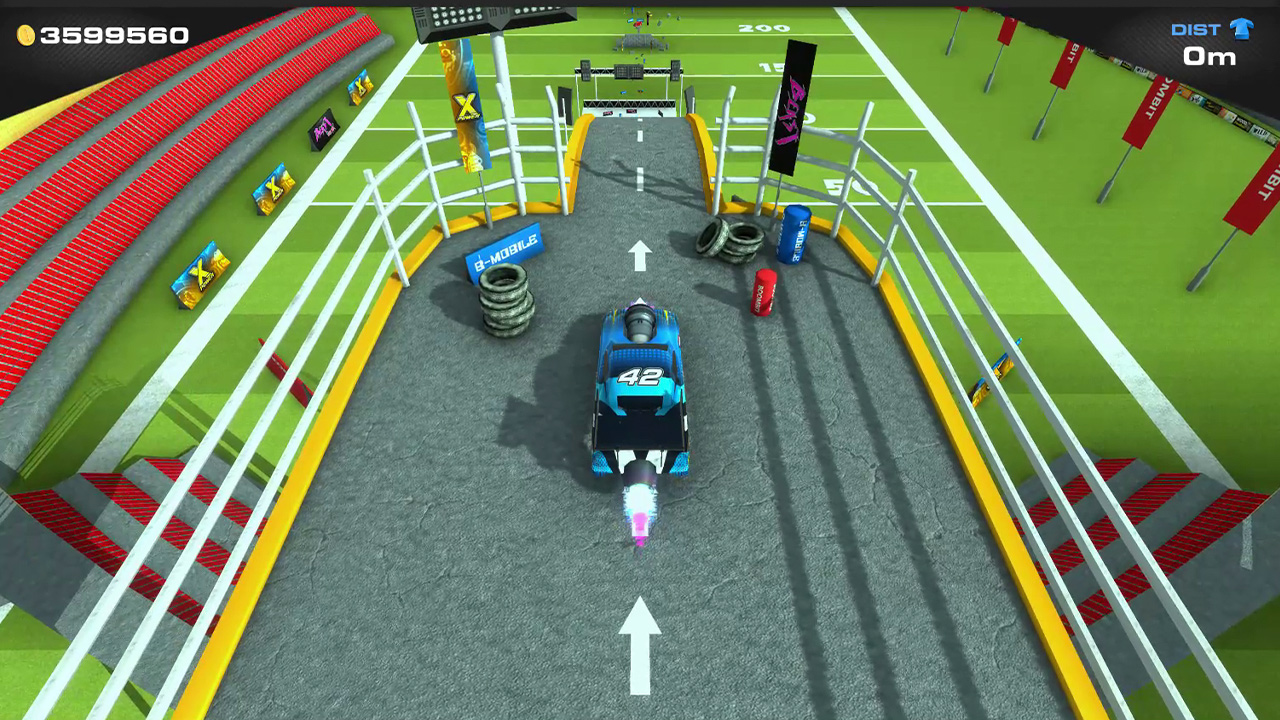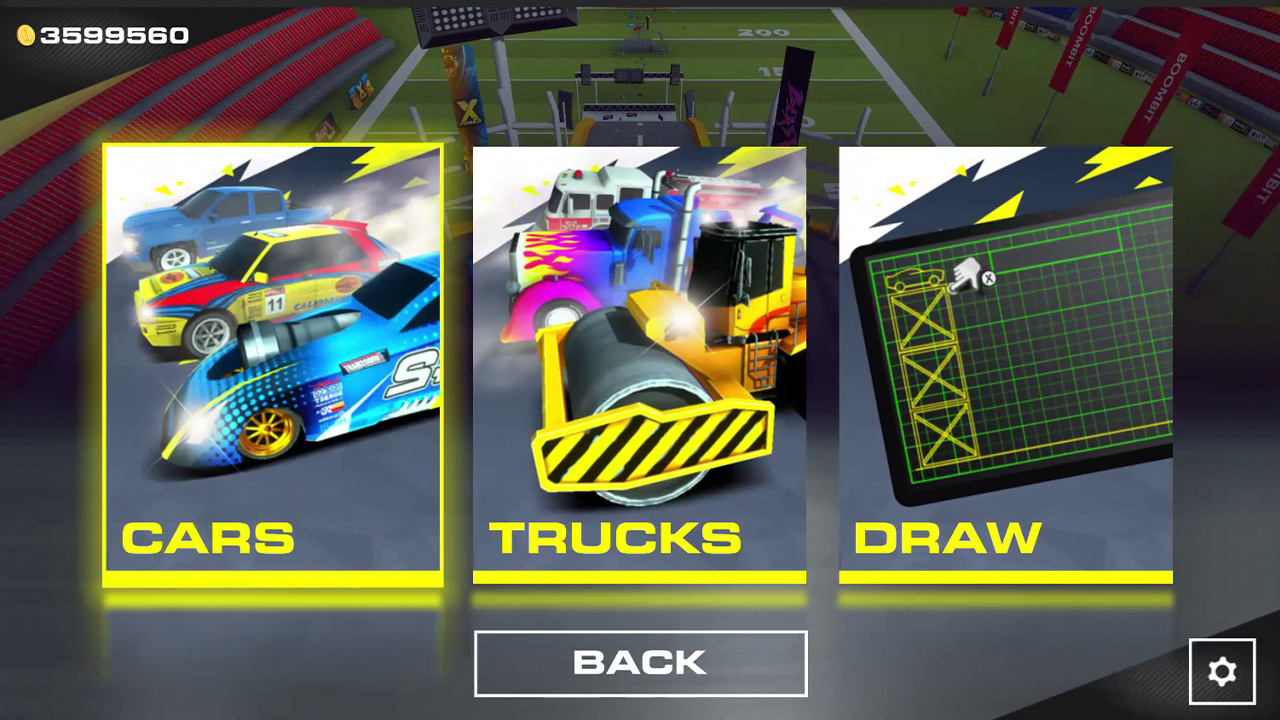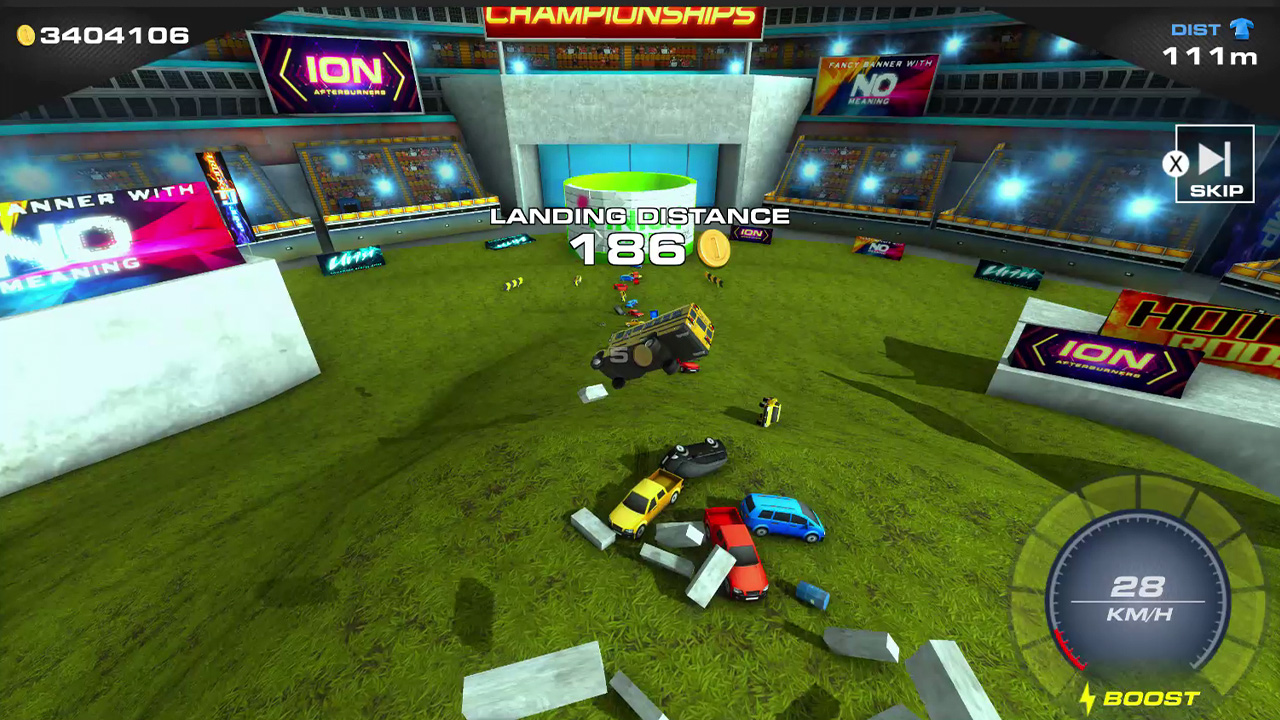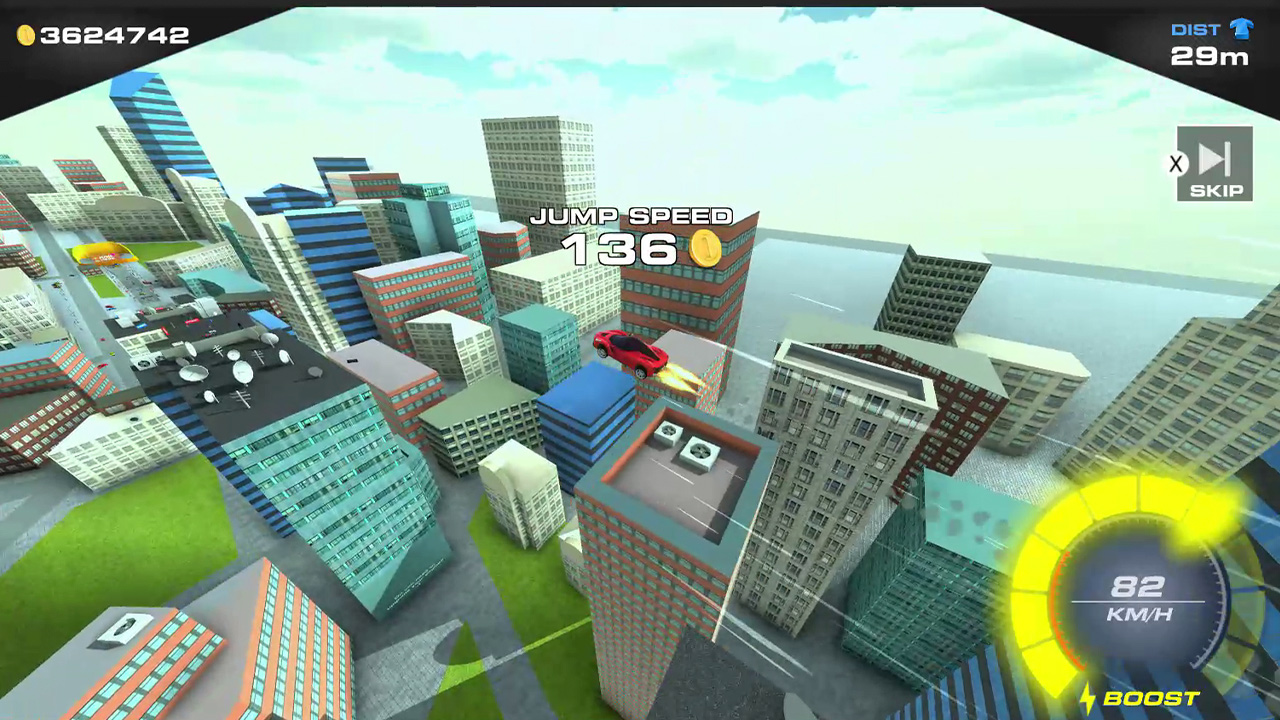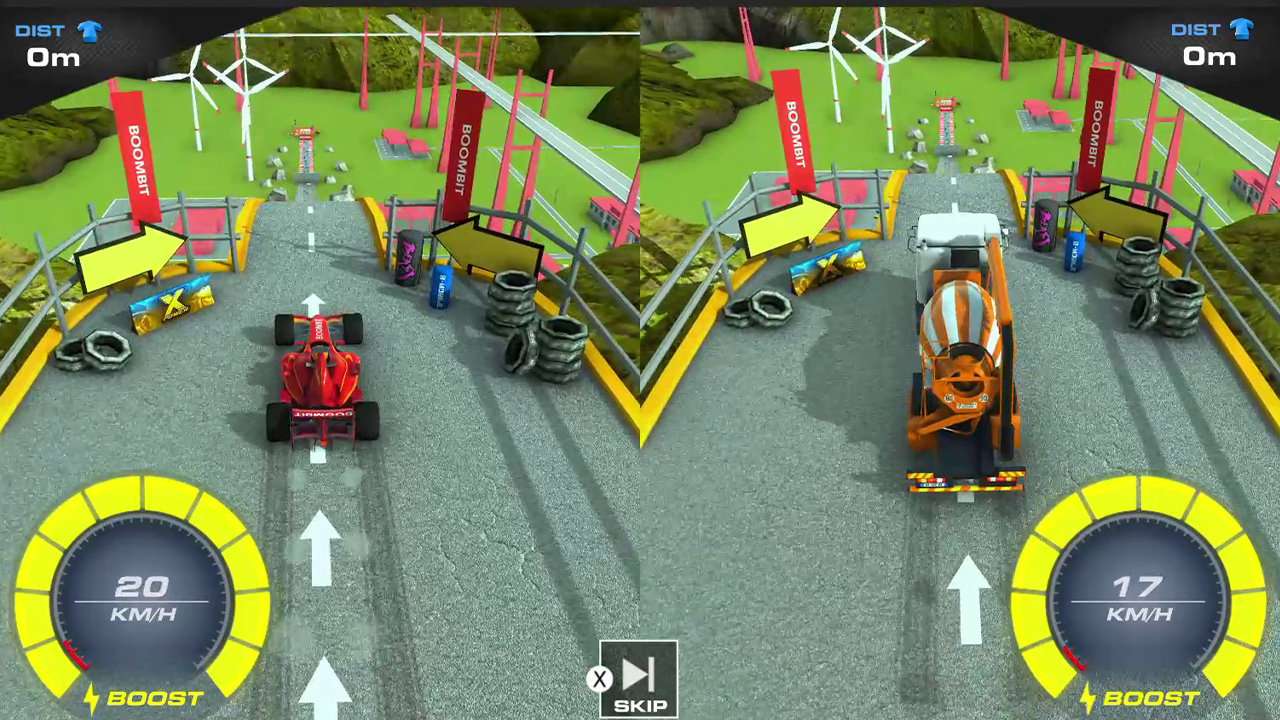Jump right over this one.
The name of this game leaves nothing to the imagination; it’s cars on ramps, jumping. Ramp Car Jumping really is a very basic game that’s fraught with issues, but it holds a glimmer of hope for our gaming friends who want to have a little fun being silly.
Let’s start with what the game does, then we’ll move on to how badly it does it. Finally, we’ll wrap it up with a silver lining. Or maybe a bronze lining (possibly with genuine, high-grade lead).
There are three basic segments of Ramp Car Jumping—a section of cars, a section of trucks, and an arena section. You are presented with a target here, and you get to draw your own ramp.
The Cars section doesn’t use real automobile makes or models, but the designs make it obvious you’re dealing with Model Ts, Lamborghinis, top fuel dragsters, and the like. The Trucks section lets you jump with vehicles such as a school bus, a fire engine, or a steam roller. It’s a game, so we’ll pretend steam rollers can do this just to see how silly we can be.
In each list of vehicles, there are two features listed for your consideration: speed and weight. What the game doesn’t rate for you is the vehicles’ stability while flying through the air. All three things are real considerations for each jump. You can buy upgrades so your “Model T” can reach a few hundred KpH and fly 1,000 meters with rocket boosters, but it really wants to start flipping end over end so you have to stay on the left Joy-Con to keep it level.
This leads us to the game’s controls, of which there are only two. The A button is “go” and the booster on/off button (the booster only functions once you leave the end of the ramp). The left stick controls pitch/roll, but only on one axis. The difference between doing a front flip and a barrel roll is whether the front of your car is pointing straight ahead or off to one side. If the front of your car is pointing to the side, things are about to be either a bummer or lots of fun.
Buying upgrades was mentioned, so I’ll dig a little deeper. The upgrades are all purchased with in-game coins (and that’s a good thing). The better the upgrade, the more they cost, but it is very easy to accumulate enough coins to buy upgrades. There are three upgrades to buy: engine power, booster duration, and reward value for your jump statistics. I have upgraded my boost from level 1 to level 170, and I still don’t know if there is a max level. On the silly side, it is fun to go back to the first few levels and use an insanely overpowered car to make the jump. It’s actually as much of a challenge to control too much power as it is to manage things in the normal progression of the game.
Now it’s time for the litany of what is wrong with this game. The graphics use some larger panels that leave everything looking like a collection of flat panels with simple repeating patterns. Even the faces in the arena on one level are completely flat looking. The overall effect is visually unappealing, and the audio is equally dull and unrealistic.
The Joy-Con rumble, if left on, is almost constantly buzzing. This causes it to become annoying quickly. The camera perspective is fixed to specific parameters, so there is no changing how the camera behaves. It is easy to get your car in a position to see through the buildings, mountains, or whatever objects you are flying past. The game area is limited, so a sufficiently powered vehicle can actually fly off the grid and end up in limbo. I had several instances where I had to use the X button to abandon the jump because I jumped into the void and the game didn’t know how to end the round.
Ramp Car Jumping has a two-player mode, but getting it to start up correctly is a bit dodgy. The instructions need some help, too; I followed them a couple times, and it didn’t want to cooperate. Every facet of this game screams of a slapdash attempt to put something out there with next to no development budget and no effort to provide a well-crafted game.
Now for the “on the other hand” part. There is some skill required to actually hit the target. Gameplay is a bit like a mash-up of slow-motion darts and billiards. A few of the landing targets require significant control and finesse to hit them in the very narrow trajectory window necessary to land on-target without bouncing out. The Draw level is an interesting addition, as you have to figure out how to lay out your ramp to hit the target with a nice variety of obstacles. You get to use your vehicle of choice, and your upgrades carry over. So, don’t forget to upgrade your boost as much as possible (having extra rocket burn time is the only way to execute some of the flight paths needed to hit the target).
The most fun I had with this game came from doing things outside the expectations and from breaking things. If you slightly clip an obstacle, you can turn your vehicle sideways, fire the booster, and fly way off grid. You can also use massively overpowered vehicles to overshoot the target to a ridiculous degree. On one level, I jumped the dragster over 13 km. You can use your boosters to fly backwards, straight up, etc. and have all sorts of fun messing up what the game was set up to do. This pays off, too, as you can collect several times more coins via really freaky jumps than you can by hitting the target.
The standard price for Ramp Car Jumping is $14.99. It’s on sale at press time for $3.74. With everything that is wrong with this game, I’m not sure it’s even worth the sale price.
Review: Ramp Car Jumping (Nintendo Switch)
Subpar
Ramp Car Jumping is a physics-based puzzler that lacks creativity and longevity. It provides a couple hours of silly fun for one or two players on the Nintendo Switch, but it never feels like more than a free-to-play mobile title.

